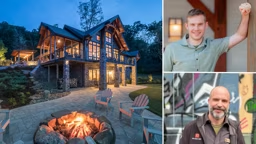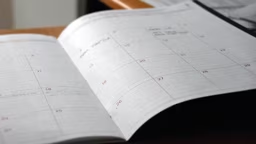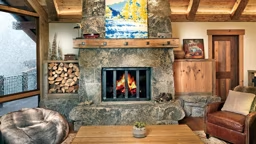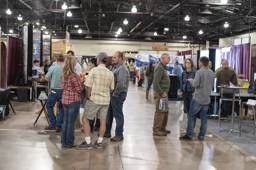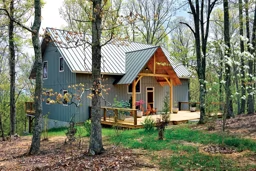
Photo: Roger Wade
Vertical Posts
Serving as the “legs” of the timber frame, their names include principal posts (used at the corners) or king, queen and crown posts, to name just a few. Each has a specific role to support other beams or trusses. For example, a Samson post, supports the intersection of four horizontal upper story beams. A joweled post (also called a gunstock post) is fashioned from a whole tree turned upside down to utilize the natural flare of the trunk.
See Also: Timber Framing 101: What is a Timber Frame House?
Horizontal Beams
These include timber sills (the perimeter of floor sections upon which posts stand), girts (which span between posts also where the term “girder” comes from), joists (used to support floors), purlins (used between exterior posts or tie roof sections together) and ridgepole (the horizontal apex of the roof system).
Trusses.
The kind of structural support your design requires, as well as personal preference, will determine your home’s truss system. A triangle is the simplest form of truss, but its use is limited to smaller buildings. Adding a king post in the center allows for a wider span. Queen-post trusses, in contrast, look like a rectangle within a triangle. The dramatic hammerbeam truss is used to span large interior spaces and enables ceilings to soar.
See Also: What Truss System is Right for You?
Bent.
When trusses are combined with the vertical posts and horizontal beams, they’re called bents. Bents form the basic cross-section of a timber frame and give it the strength it needs to carry structural weight.




